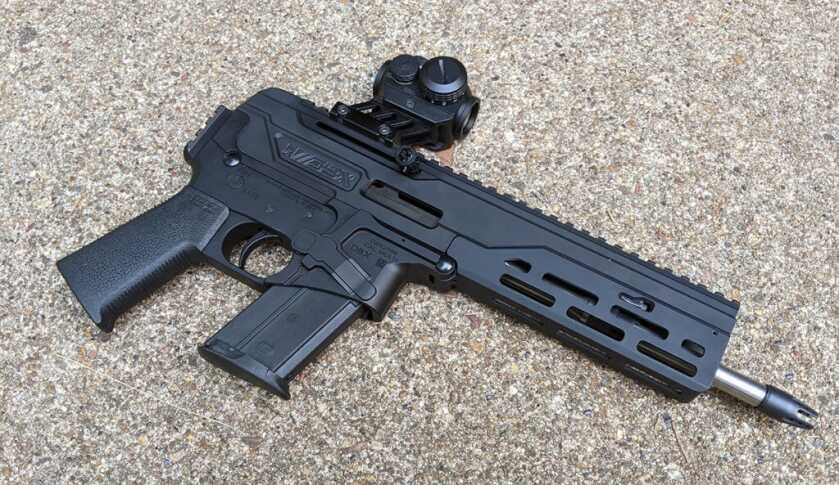
If Wikipedia is to be believed, the “personal defense weapon” concept dates all the way back to the 1980s, when NATO requested a souped-up submachine gun that could defeat body armor while retaining a compact profile.
More recently, gun makers have glommed on to the categorization to describe any low-profile rifle or pistol that can fire a bottleneck cartridge. Maxim’s PDX is among the most famous, and I had a chance to review Springfield’s excellent Saint Edge PDW earlier this year.
The problem with launching a .223/5.56 NATO cartridge out of a 5.5-inch barrel is that, as I observed about the Saint PDW, it turns the rifle into a rifle/flamethrower combo. You lose quite a bit of bullet velocity, and the deafening blast is enough to ring your ears through your ear pro. It’ll get the job done in a life-or-death situation, but it’s a pain to bring to the range.
This desire for an intermediate cartridge—something between a soft-shooting pistol caliber and an ear-ringing rifle caliber—helps explain the recent resurgence of the 5.7x55mm. At the 2020 SHOT Show, Ruger unveiled their much-ballyhooed Ruger-57, and the industry declared (Ok, I declared) that the 5.7mm had “gone mainstream.”
At the same time, too much less fanfare, Diamondback released a semi-automatic pistol called the DBX57, and it may be the best PDW on the market.
Click here to check it out on Diamondback’s website.
Specifications
Operating System: Locked Breech, Dual Gas Piston
Caliber: 5.7x28mm
Frame: 7075 Aluminum, Hard Coat Anodized
Handguard: 6061 Aluminum, Hard Coat Anodized, M-LOK Compatible
Barrel Length: 8 in
Twist: 1:9 RH
Muzzle Device: DBX Muzzle Device
Barrel Muzzle Threads: 1/2 x 28 RH
Trigger: Standard AR15 Mil-Spec
Grip: MagPul MOE K Grip
Action Type: Semi-Auto
Sights: None
Magazine Capacity: 20 Round (FN Five-SeveN compatible)
Height: 7.3
Length: 15.25 in
Width: 1.75 in.
Weight (Unloaded): 3 lb
MSRP: $1,125
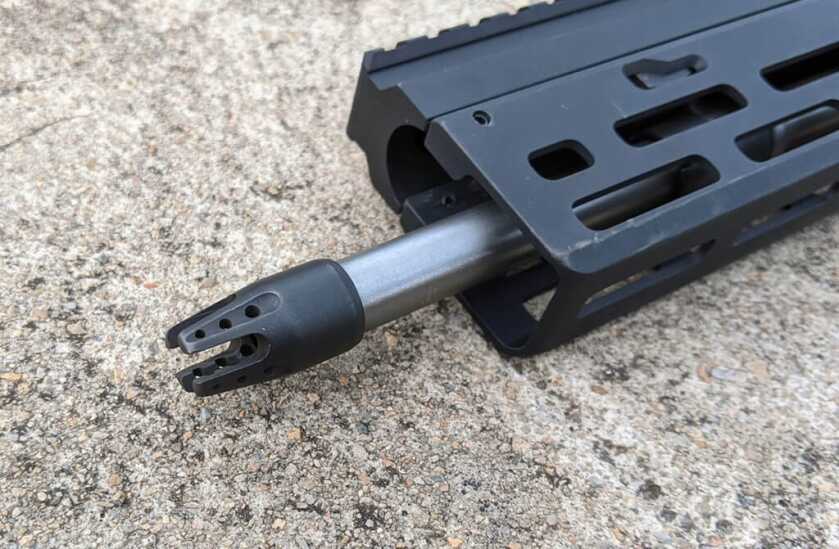
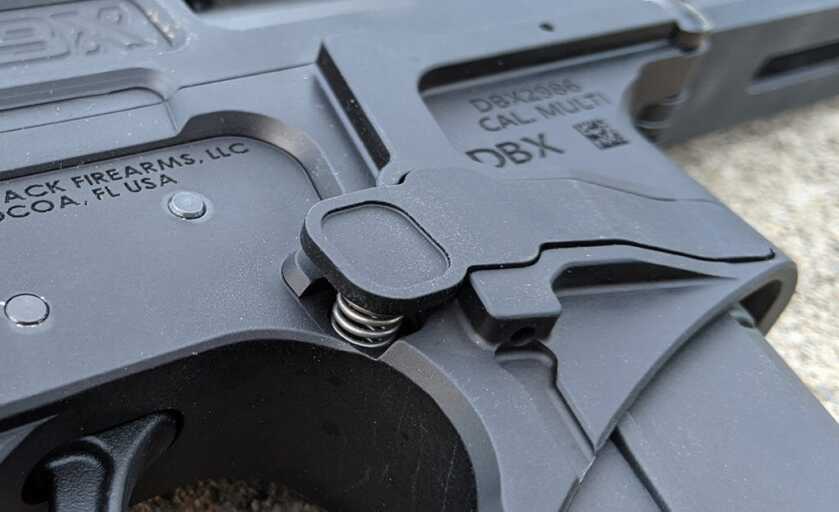
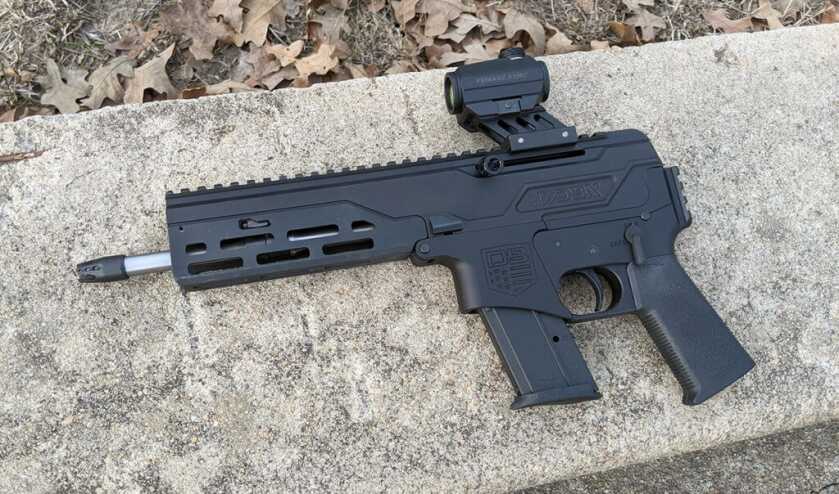
“Personal”
Maneuverability, stow-ability, and concealability are at the heart of the PDW concept. Whether you’re a special forces soldier clearing a building or a self-defense practitioner looking for a suitable truck gun, a PDW should be able to go wherever you do.
Diamondback’s DBX57 is more compact and lightweight than today’s most popular PDW’s. Both Springfield’s and Maxim’s PDW’s measure a stocky 18.75”, but the DBX57 is only 15.25” without a stock attached. Attaching a folding stock only adds the length of the hinge, usually between 0.25 and 0.5 inches. This is obviously a bit longer than a full-sized handgun, but handguns have a hard time competing with the ballistics of a 5.7mm coming out of an eight-inch barrel (more on this below).

The DBX57 is eminently stowable, but it’s also ridiculously lightweight. At only three pounds unloaded, the pistol is over 40 percent lighter than the PDX, and not too much heavier than a standard full-sized handgun. With a red dot, steel folding stock, and fully loaded magazine, the entire package only weighs 4 pounds, 2 ounces—more than a pound less than the PDX with an empty magazine and no optic.
For me, and for many of the guys who shot the DBX57, the pistol’s most noticeable feature is its width. A PDW based on the AR-15 platform is necessarily about as wide as a standard AR-15. The DBX57 takes AR-platform triggers and safeties, but Diamondback designed the rest of the platform around the diminutive 5.7x28mm cartridge.
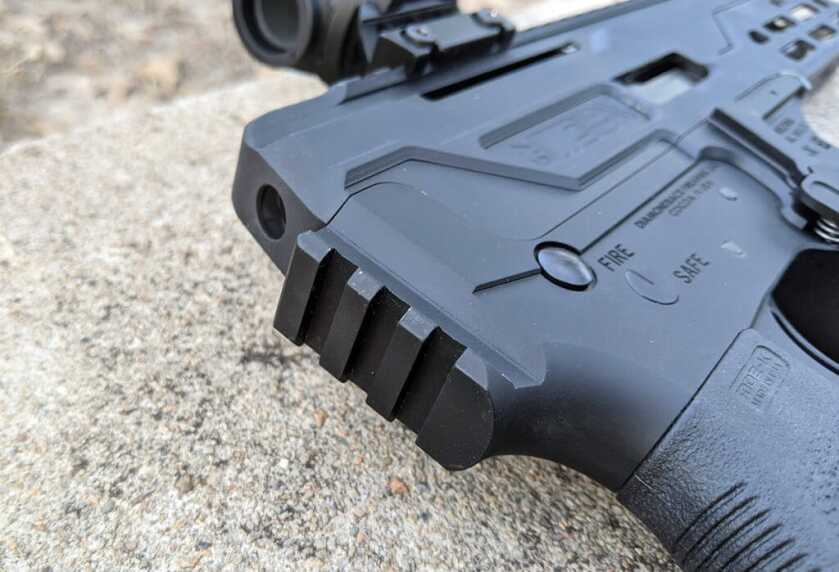
At only 1.75 inches in width, the DBX57 isn’t much wider than a full-sized handgun. In fact, that width includes the charging handle, which protrudes significantly from the side of the firearm. The body of the DBX57 is less than one inch wide, making it feel much more like a standard pistol than the “pistols” based on the AR-15.
“Defense”
In a life-or-death situation, your firearm must be both reliable and intuitive to use. The DBX57 is designed to be both.
First, the dual-piston adjustable gas block ensures that you can tune the DBX57 to both your ammunition and your suppressor or muzzle device. Each gas block can be adjusted with a flathead screwdriver without disassembling the firearm, and the four settings ensure you can find a gas setting to fit your setup. The gas blocks produce an audible and tactical click with each adjustment, and the adjustments are numbered so you can set both to the same number.
I ran an AAC Ranger suppressor during a portion of my testing (thanks to the guys over at the Texas Tactical Training Center), and the gas block helped ensure that the gun cycled like a champ. And talk about easy to shoot! Suppressing the 5.7mm cartridge out of an eight-inch barrel reminded me of shooting a .22LR, and it was stupidly easy to keep rapid-fire shots on target.
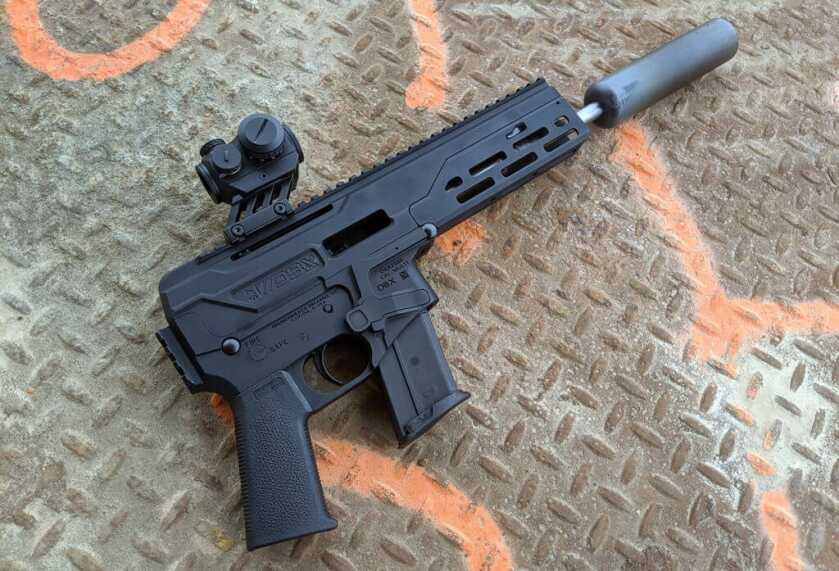

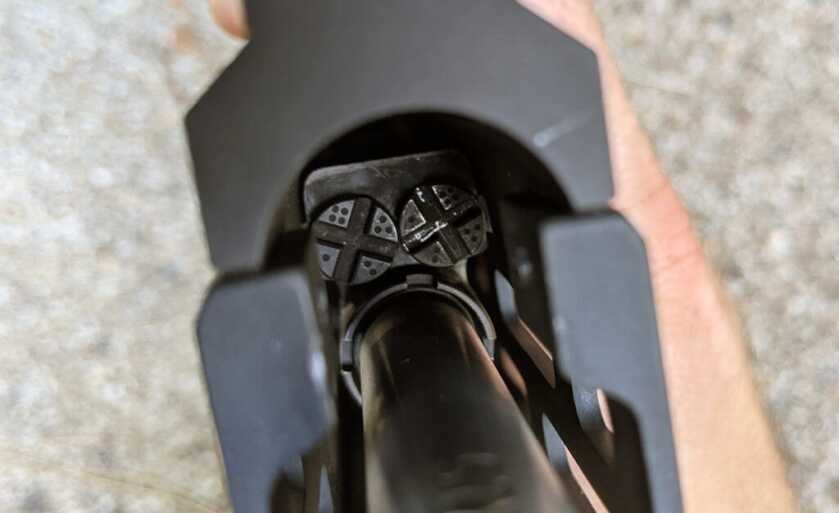
Once you’ve tuned the DBX57 for reliability, it’s a piece of cake to become proficient with the platform if you’re familiar with an AR-15. Diamondback designed the DBX57 to accept AR-platform pistol grips, triggers, and safeties, so you can swap the standard DBX57 options for your favorite grip style and fire controls. The mag release button and bolt-close button are slightly different, but they’re located in the same places, and I found them to be intuitive to use.
Other features increase usability even more. The side-charging handle can be installed on either side, so it won’t get in the way of a folding stock. Side-chargers also allow users to clear jams without breaking firing position and charge the firearm manually in the event of a gas system failure. The full-length Picatinny rail allows for a wide range of optics, and the handguard features more M-Lok slots than you can shake a stick at.
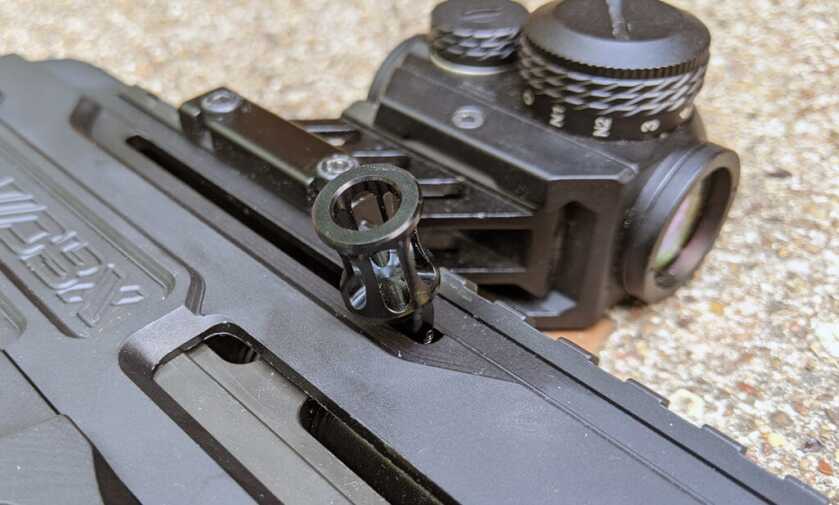
Diamondback even designed the DBX57 to accept FN mags. This isn’t likely to save you much money, but it does give you another source of magazines in case Diamondback’s aren’t available.
The only ammo used for testing was Federal’s basic 40-grain FMJ rounds, but it ran through those like a champ. No complaints on the reliability front.
“Weapon”
The best defense is a good offense, as they say, and the 5.7mm combines firepower with shootability to produce some of the most intriguing ballistics on the market. Billed as a middle ground between pistol and rifle cartridges, the 5.7mm shines in the DBX57 platform.
Here’s a quick comparison between the 5.7mm, the 9mm, and the .223 Rem, all shot from eight-inch barrels.
| Projectile | Velocity (fps) | Energy (ft-lbs) | Cost/Round |
| 40g 5.7mm | 2,100 | 392 | $0.85 |
| 124g 9mm | 1180 | 383 | $0.50 |
| 55g .223 Rem. | 2380 | 692 | $0.75 |
As you can see, the 5.7mm moves significantly faster than a 9mm, but its diminutive size means it only imparts slightly more energy. However, that small size also means you can fit more rounds in a smaller space, as evidence by the DBX57’s 20-round magazine.

Compared to a .223 Rem., the 5.7mm is both slower and less powerful. However, it also produces significantly less muzzle blast and muzzle rise and is much easier to suppress than its hotter bottleneck cousin. Also, when compared to the 9mm, the 5.7mm cartridge takes up less space than the .223 Rem.
The 5.7mm is without question more expensive than either the 9mm or the .223 Rem. Those prices are obviously subject to serious fluctuations, but generally speaking (and especially these days), the 5.7mm is more expensive and more difficult to find. That’s one of its biggest weaknesses, and it’s likely why more folks haven’t adopted 5.7mm platforms.
I didn’t get a chance to shoot watermelons or ballistics gelatin, but there has been some research done on the efficacy of the 5.7mm cartridge. One 2000 article published in Wound Ballistics Research, found that while a 31-grain 5.7mm fired from a 10.4-inch barrel doesn’t penetrate as deeply as a 9mm, it is more effective at penetrating soft body armor (which was one of the purposes of the cartridge). A 40-grain bullet is likely to penetrate deeper, and a V-Max bullet or a bonded soft point is likely to produce better ballistics results than the 31-grain FMJ rounds used in testing.
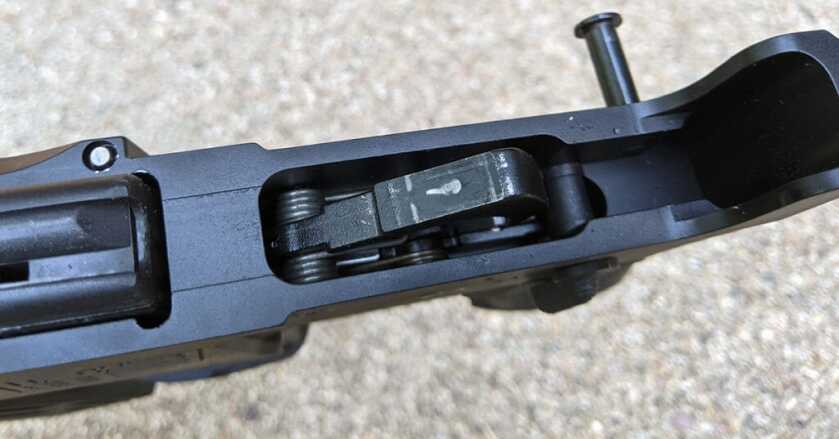
For a handgun, accuracy at 50 yards is excellent. For a rifle, it’s so-so. I was using a red dot rather than a magnified optic, and the ammunition from Federal is designed for plinking, not match-grade shooting. I have no doubt you should shrink those groups with a magnified optic and higher-quality ammo, but here’s what you can expect with the setup I was using.
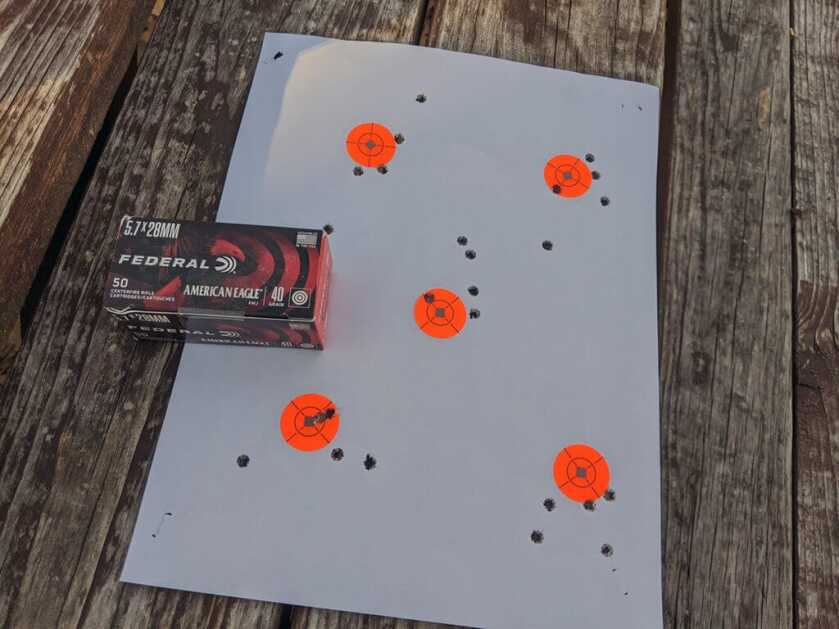
Like handguns, personal defense weapons aren’t designed for long-range work. In short-range applications, the DBX57 is more than accurate enough to get the job done.
Last Shots
A few more things I wanted to mention.
First, while I think the gun is thoughtfully designed on the whole, disassembly is what we in the industry like to call “a pain.” The DBX57 may look and feel like an AR-15, but taking it apart involves quite a few more steps. You can check it out on pages 22-25 of the owner’s manual here. I don’t clean my rifles as often as I should, so this isn’t a big turn-off for me. But if you want to be able to take down your rifle quickly in the field, it’s something to keep in mind.
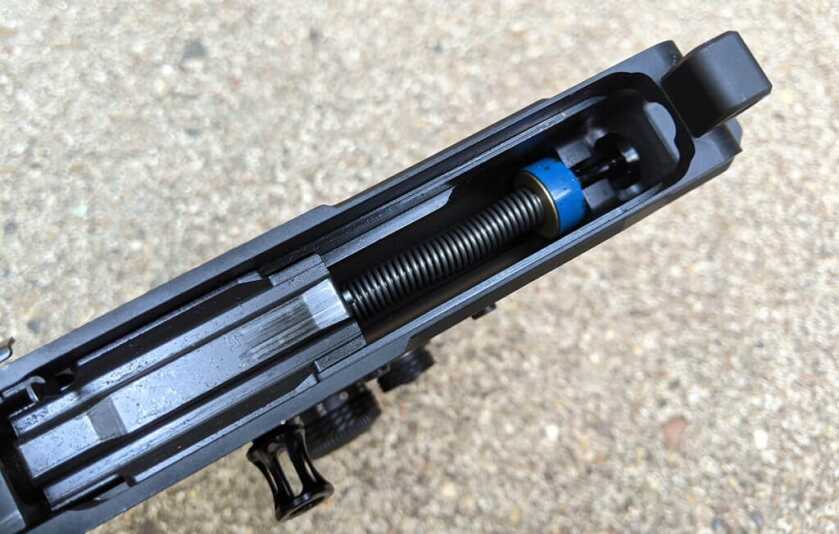
Admittedly, the appeal of the DBX57 depends a lot on what the ATF decides to do with arm braces. Shooting the DBX as a handgun is easy—enjoyable even. But it really shines when you throw on a brace and shoulder the firearm, and that will be much more difficult to do if you have to get a short-barreled rifle stamp. The first iterations of the DBX57 came with a pistol brace already installed, but the company recently nixed that option in light of the fluctuating arm brace rule. (Hilariously, rather than print off entirely new user’s manuals, Diamondback just placed black tape over all mentions of the arm brace. I pity the intern who landed that job.)
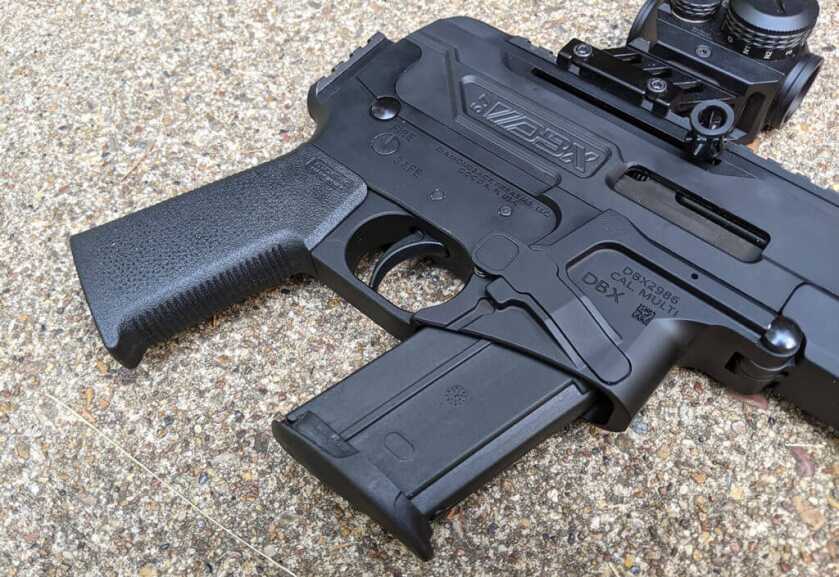
Cost is also something to note. At a cool $1,125 MSRP, the DBX57 costs significantly more than most standard handguns, though not as much as FN’s FiveseveN. If you’re looking for a budget gun you can lock in your truck and forget about, this probably ain’t it. The DBX is durable enough, but for most gun owners, it’s a serious investment you may not want to neglect.
Ultimately, the DBX57 is a tool, and like any tool, it shines in the application for which it was designed. It’s compact, lightweight, and offers plenty of firepower to escape a self-defense situation. It’s also reliable, durable, and well-designed. If you’re looking for a PDW, you can’t do much better than Diamondback’s new pistol.
Click here to check it out on Diamondback’s website.

I have to laugh at the people above who are concerned about the way a gun looks. Who cares what a gun looks like as long as it’s accurate, reliable, & functions as designed? Some of you act like you’re in a beauty pageant. SMH
It’s fine that some don’t like the DBX57 but why whine about it? No one is forcing anyone to purchase one. If you don’t like it don’t buy it, problem solved.
I have this one and 2 other 5.7 firearms ( Ruger 5.7 and Banshee AR w/ 8″ bbl) Out of the 3, I like this DBX57 the best. Like the review says, It’s crazy light and manuverable. I added a pistol brace and a Burris (3x) Ar 332 red dot scope. I just “feel” like I can do just about anything with it and do it easier than any other gun I have. The scope and my reloads have made it a tack driver at 50yds. It’s a “lot” lighter than my Banshee with the same scope. My Banshee has the binary trigger as well. I’m still waiting to see someone else put a binary trigger on there DBX57 before I decide to, however. I love it just the way it is now.
I am trying to modify my DBX to Chamber 221 Fireball, Which would make it more feasible for use with its 9inch barrel.
Indeed, this is a solution to a problem which has yet to be found. It LOOKS like a SBR without a stock. It probably feels slightly nose heavy (from the general appearance of the thing). If I want a long barreled pistol, I have an imitation Buntline 10″ in .45r COLT. It too is slightly nose heavy, but when fired the recoil erases the nose heaviness completely…and the bullet is a bit more “hairy” than 5.7 mm. Heavier, too,
Sheesh, I’ve done all this writing and STILL haven’t figured out what one could possibly use this “pistol” for. Perhaps one of the readers can help me here? Like Diamondback, I seem to be out of ideas…
Just what I need…another designer caliber to inventory not to mention source. Stop the madness, how many size bullets do we need.
How embarrassing.
Yes a little too pricey for my budget too. I can use my 9mm in a case of concealed carry while out in public and have more rounds available that are cheaper and have more choices that can really stop a bad guy. At home I have my AR-15 with an SKS as a back-up and shotgun if they manage to get closer and I have some great WWII rifles if they are long way away. I’m covered thank you very much without this expensive play-toy.
I have no use for this Halloween abortion. C’mon Ruger. Bring back the Deerstalker, with that gorgeous rotary magazine,and pistol grip,in 5.7 with the Mini 14 tubular folding stock.Id buy one, no hell, Id buy 2. Now that would be a truck gun.
Interesting, but I think I’ll go with the KelTek P50. More ammo, easier to clean, and about the same size.
It’s clear to me that Diamondback Firearms has run out of ideas with this thing.
The PDW is too large to legally conceal in South Carolina with a CWP as it want fit in a 12” circle. No sale!
This is one ugly pistol. If I want a 5.7 I’ll stick with the Ruger or FN. All have 20 round mags, are better looking pistols and easier to clean and carry. This thing may look badass but not practical especially at the price.
Why not stay with a high cap 9mm where ammunition is easily available?
In the words of Jeff Cooper “an ingenious solution to a non-existent problem”. A Glock 19 loaded with Corbon +P+ is easier to carry, just as powerful and easier to shoot.
it is a waste of production!! you cannot do anything more with this piece then you can with the pistol platform??? it is not at all practical and gives no advantage until a super hi-cap mag is developed!!!
357sig with Lehigh Xtd 65grn. or 90grn. copper fluted bullets.
would be much better.
A firearm which lacks ammunition is otherwise known as a club; a very expensive club.
Where did you find 5.7×28 at $.85/round. It has finally come down to $1.00/round on ammoseek in the last few weeks.